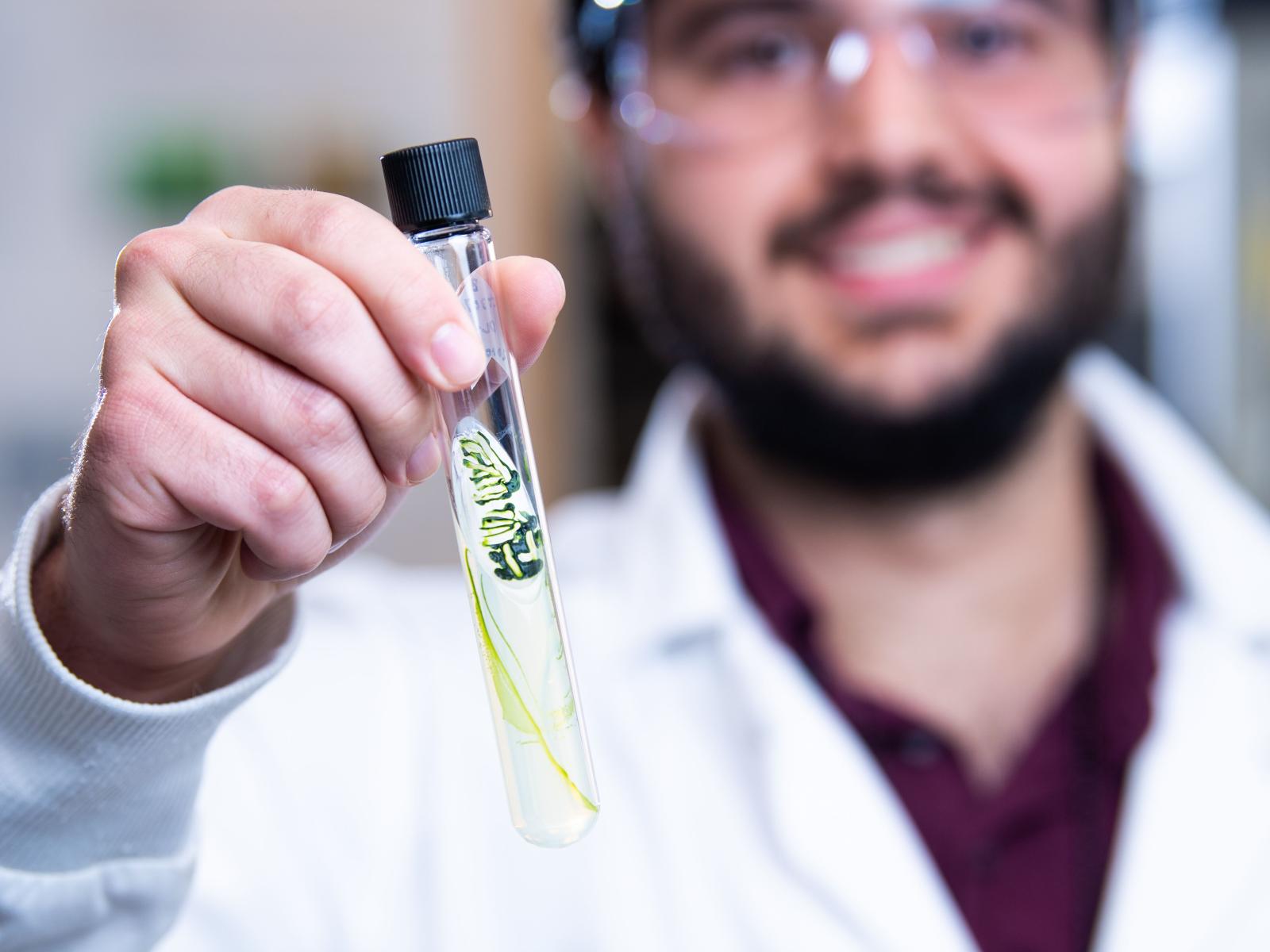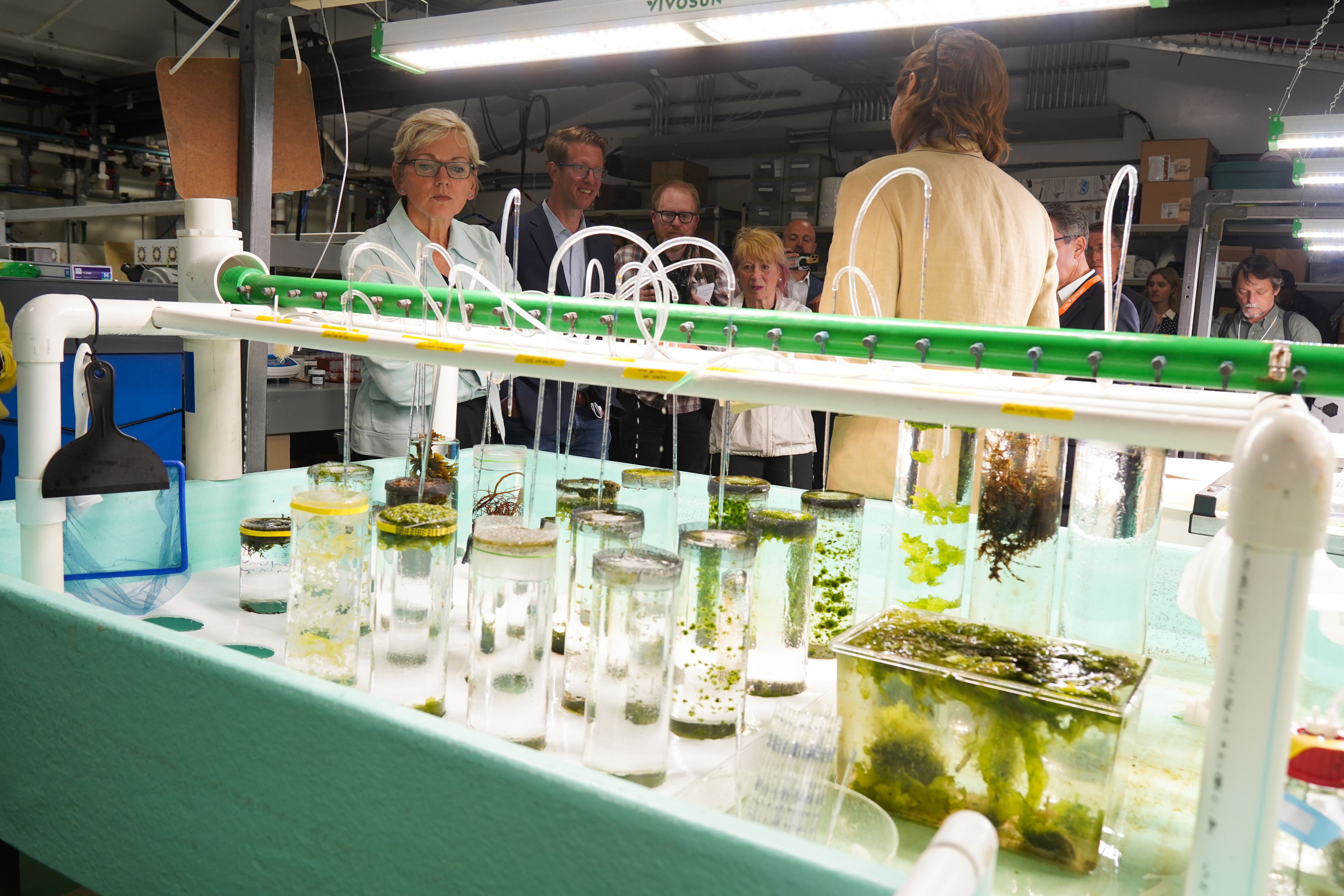PNNL Researchers Are Mining Minerals from the Sea for Vital Energy Independence Research

Intern Ray Cabreriza joined researchers at PNNL-Sequim who are studying algae and their potential to collect and concentrate critical minerals known as rare earth elements from seawater.
(Photo by Andrea Starr | Pacific Northwest National Laboratory)
Earlier this month, we celebrated Independence Day and the freedoms we enjoy because of it.
Our nation is now striving for another kind of independence: in the supply chains critical to our economic vitality and national security.
This includes access to critical minerals and rare earth elements used in technologies such as smart phones, LED lighting, wind turbines, x-ray machines and catalytic converters.
Today, many of these essential natural resources are mined predominantly in China. Researchers at the Department of Energy’s Pacific Northwest National Laboratory are exploring alternative sources of these minerals that are less vulnerable to supply chain disruptions such as the recent embargo imposed by China.
In this quest, our researchers are looking at the oceans as an under-tapped resource for minerals typically dug from the ground.
A spoonful of seawater contains not just salt, but every element in the periodic table. Even though they are found in low concentrations—only parts per trillion—oceans are perhaps the largest single source of rare earth elements on the planet.
Moreover, because the oceans are not controlled by any one nation, they avoid many of the geo-economic-political issues we read about in the news.
In one promising project, PNNL researchers are investigating how algae can be used to harvest certain critical minerals from seawater.
Rather than chemically or physically separating these minerals, researchers are exploiting biological processes that concentrate them so they can be cost-effectively produced.

To better understand these processes, our scientists utilize the unique capabilities of our Marine and Coastal Research Laboratory located at PNNL-Sequim on Washington’s Olympic Peninsula.
With direct access to flowing seawater, they are growing different species of algae in the laboratory. Some are green, others are red; some are leafy, others are stringy.
Looking closely at each, researchers are gaining insights into their properties and propensity for extracting different minerals from the seawater.
They are finding some algae can concentrate certain minerals a million times more than found naturally in the seawater.
Results also show the process improves ocean health. Water flowing out of the algae tanks is less acidic because the carbon stays in the algae, as do the nitrogen and phosphorous, helping to prevent possible harmful algae blooms.
Across the room in another experiment, researchers are growing algae in larger tanks where they are adjusting the temperature and light to simulate the ideal environmental conditions for the different species being studied.
This provides insights into how much algae can be grown over time and the locations where they grow best.
The results get even more interesting—and potentially more lucrative—once the algae are harvested.
The algae are shipped from Sequim to our Richland campus, where a process called hydrothermal liquefaction converts the wet biomass into renewable oil that could be turned into diesel or jet fuel.
Producing the sustainable fuel results in two byproducts. The first is a solid “waste” with concentrations of rare earth elements that are now 10 million times higher than found in seawater and could be further refined.
The second is a liquid that is rich in ammonia and potassium, critical fertilizer ingredients. With three value streams in three markets, algae could become a cost-effective commercial crop.
Looking beyond this project, funded by DOE’s Advanced Research Projects Agency-Energy (ARPA-E), the team hopes to advance processes to further refine critical elements for commodity markets.
They also hope to broaden their efforts to include platinum group metals, which are used as catalysts in various industrial processes.
The patriotic song “America the Beautiful” includes the line, “from sea to shining sea.”
While this referred to the rich land between the Atlantic and Pacific, researchers working on this project are contributing to our nation’s independence by exploring how to mine the seas themselves for important minerals needed for today’s technologies and economic independence.

Steven Ashby, director of Pacific Northwest National Laboratory, writes this column monthly. To read previous Director's Columns, please visit our Director's Column Archive.
Published: July 24, 2023